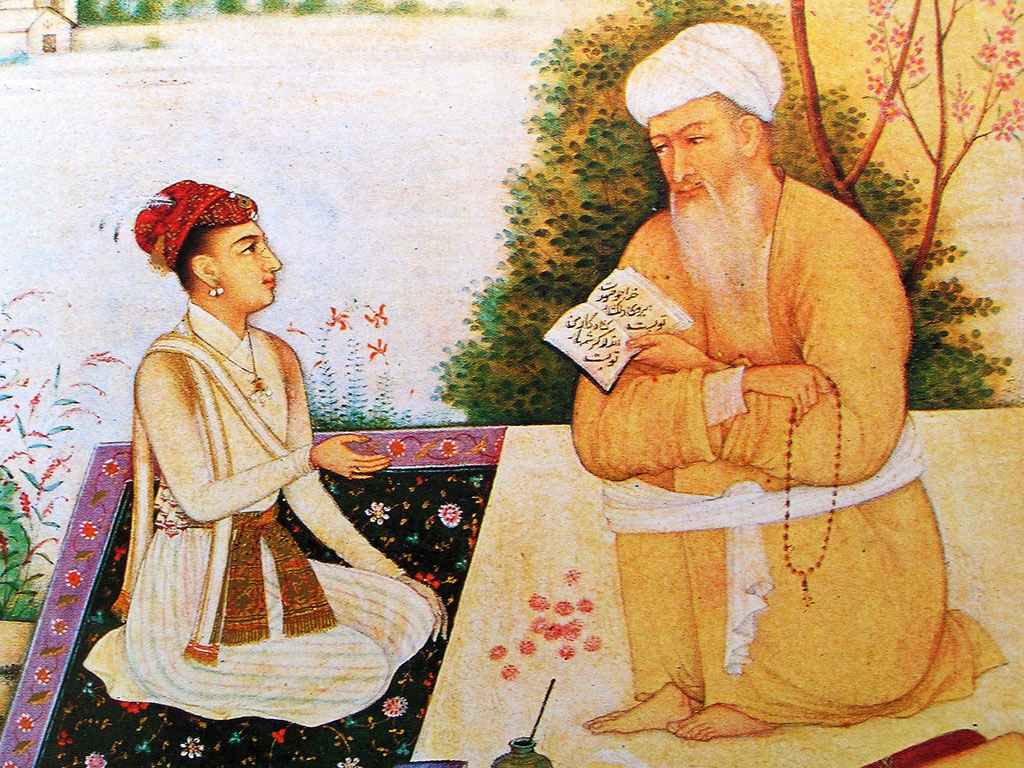
Bhakti And Sufi Movement
Assessment
•

Krish M
•
History
•
7th Grade
•
37 plays
•
Hard
Improve your activity
Higher order questions
Match
•
Reorder
•
Categorization
.svg)
actions
Add similar questions
Add answer explanations
Translate quiz
Tag questions with standards
More options
5 questions
Show answers
1.
Multiple Choice
What is Bhakti and Sufi movement?
Do you know the medieval period in India saw the rise and growth of the Sufi movement and the Bhakti movement. The two movements brought a new form of religious expression amongst Muslims and Hindus.The Bhakti saints transformed Hinduism by introducing devotion or bhakti as the means to attain God
The most important social impact of the Bhakti movement was that the followers of the Bhakti movement rejected the caste distinction. They began to mix together on the basis of equality. The movement tried to loosen the bond of caste.
2.
Multiple Choice
What were the main principles of the Bhakti movement?
God is one,To worship God man should serve humanity, All men are equal, Worshipping God with devotion is better than performing religious ceremonies and going on pilgrimages, and Caste distinctions and superstitious practices are to be given up
TBhakti movement was that the followers of the Bhakti movement rejected the caste distinction. They began to mix together on the basis of equality. They took their meals together from the common kitchen. The movement tried to loosen the bond of caste
śravaṇa (listening to ancient texts),kīrtana (praying),smaraṇa (remembering teachings in ancient texts),pāda-sevana (service to the feet),archana (worshiping), namaskar or vandana (bowing to the divine),dāsya
3.
Multiple Choice
What are the 9 types of bhakti?
śravaṇa (listening to ancient texts),kīrtana (praying),smaraṇa (remembering teachings in ancient texts),pāda-sevana (service to the feet),archana (worshiping),namaskar or vandana (bowing to the divine),dāsya
Due to the Shi'a belief that Ali should have been the first caliph, the three caliphs that preceded him, Abu Bakr, Umar, and Usman, were considered illegitimate usurpers.
It spread across northern India in 15th century and reached its zenith in 17th century.
4.
Multiple Choice
What are the main beliefs of Sufism?
Sufism, known as tasawwuf in the Arabic-speaking world, is a form of Islamic mysticism that emphasizes introspection and spiritual closeness with God. While it is sometimes misunderstood as a sect of Islam, it is actually a broader style ofworship that transcends sects, directing followers' attention inward.
Repentance, Sincerity, Remembrance, and Love, it traces the fundamental stages and states of the spiritual novice's transformative journey, emphasizing the importance of embracing both human limitations and God's limitless love.
A loving relationship between a devotee and his personal god. Bhakti emphasised devotion and individual worship of a god or goodess rather than performance of elaborate sacrifices.
5.
Multiple Choice
What is Khanqahs in Sufism?
also known as a ribat – among other terms – is a building designed specifically for gatherings of a Sufi brotherhood or tariqa and is a place for spiritual retreat and character reformation.
They came from Central Asia and the Arabian Peninsula in order to establish an Islamic society. Sufismtook shape and became an institution in the 12th and 13th century
South India during the seventh to eighth century CE, spread northwards from Tamil Nadu through Karnataka and gained wide acceptance in fifteenth-century Bengal and northern India.

Explore this activity with a free account
Find a similar activity
Create activity tailored to your needs using
.svg)

Ruling The Countryside
•
8th Grade

Indian Monuments
•
6th - 10th Grade

From Hunting Gathering to Growing Food
•
6th Grade

Indian National Movement
•
University

The Indian Constitution
•
6th - 9th Grade

Nationalism in India
•
10th Grade

Socialism in Europe and Russian Revolution
•
9th Grade

Nationalism In Europe
•
10th Grade